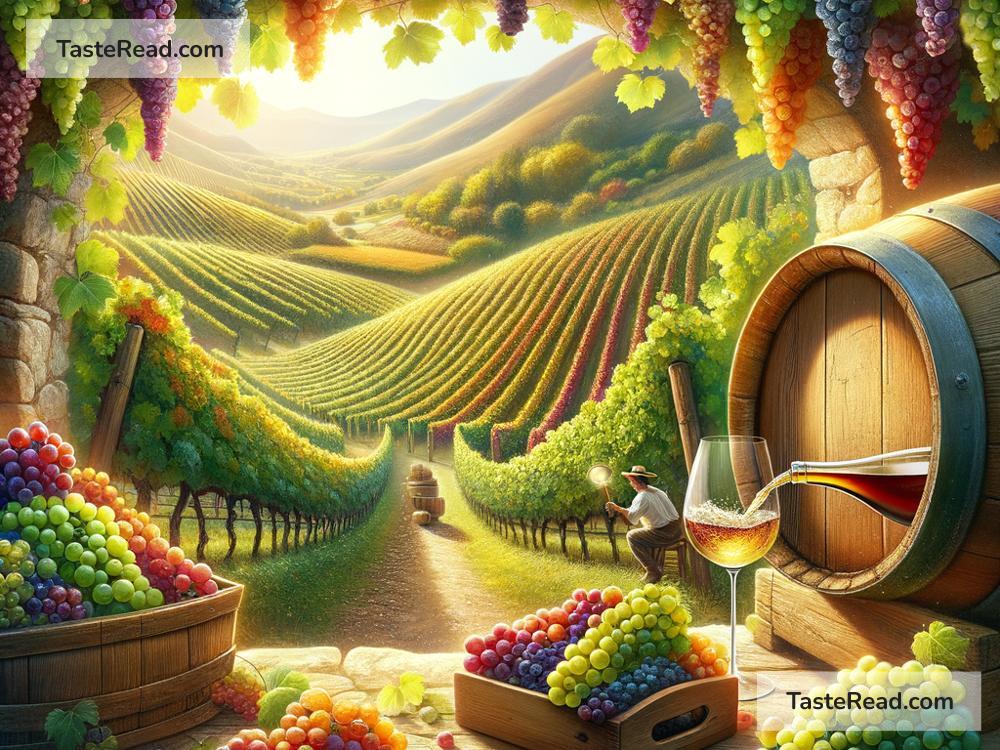How Grapes Became the Foundation of Wine
Wine is one of the oldest and most celebrated beverages in human history, enjoyed across the globe for thousands of years. But have you ever wondered why grapes became the go-to ingredient for making wine? After all, many fruits like apples, plums, or berries can be fermented into alcohol. So, what makes grapes so special? Let’s explore how this humble fruit became the foundation of wine and shaped human culture and tradition over centuries.
Grapes: Nature’s Perfect Fruit for Fermentation
At the heart of the story is the grape itself. Grapes are one of nature’s most unique fruits because they contain everything needed to make wine. First and foremost, grapes have the perfect balance of sugar and acidity. The sugar is crucial because it fuels the fermentation process, during which yeast transforms sugar into alcohol. The higher the sugar content, the higher the alcohol content in the wine.
Grapes also contain natural acids, such as tartaric acid, that help preserve the integrity of the wine during fermentation and storage. This balance of natural sugars and acids makes grapes an ideal candidate for producing a drink that can last a long time without spoiling.
Additionally, grape skins provide another key ingredient: tannins. Tannins are compounds that add texture, structure, and complexity to wine, particularly red wine. These natural chemicals help wine age gracefully over time, improving its flavor. While some other fruits contain tannins, grapes have them in abundance, making them superior for crafting long-lasting and flavorful beverages.
The History of Grapes and Wine
The origins of wine date back thousands of years, likely to the region around modern-day Georgia in Eastern Europe. Evidence suggests that humans began cultivating grapevines and fermenting grapes into wine as early as 6,000 BCE. Ancient pottery shards from this time period show traces of grape residue, indicating that wine was already being produced.
Early grapevines were wild and likely stumbled upon by chance. Ancient humans might have noticed that leftover grapes fermented naturally in the open air, creating a liquid with intoxicating effects. Once they discovered the process, people began experimenting with cultivating grapevines and refining the fermentation technique.
Grapes quickly became a staple crop in many civilizations, from Mesopotamia and Egypt to Greece and Rome. The Greeks, for example, viewed wine as a gift from the god Dionysus and integrated it into their religion, social gatherings, and daily life. The Romans, on the other hand, perfected grape cultivation and winemaking techniques, expanding vineyards across Europe. They even invented barrels for storing and transporting wine, ensuring its popularity spread far and wide.
Why Not Other Fruits?
If grapes were so perfect for winemaking, what about other fruits? While apples, pears, and berries can be fermented into alcoholic beverages, they lack the consistent balance of sugar, acidity, and tannins found in grapes. This makes them less versatile for producing a wide range of wine styles.
Plus, grapes are easy to grow and adapt well to different climates. There are thousands of grape varieties, each suited to different regions and environments. Farmers and winemakers can grow grapes in places ranging from the warm Mediterranean to cooler regions like Germany. This adaptability allowed grapes to become a favored crop for winemaking across the world.
Another advantage of grapes is their juice-to-skin ratio. When grapes are crushed for juice, the process yields a significant amount compared to smaller fruits like berries. This efficiency makes winemaking more practical and economical.
The Role of Tradition
Aside from their natural advantages, grapes became the foundation of wine largely due to tradition. Over time, people developed cultural and religious practices around winemaking, cementing grapes’ role as the key ingredient. For example, wine plays a prominent role in Christian rituals like communion, and it was essential in many Jewish celebrations, such as Passover.
As ancient trade routes expanded, wine became a valuable commodity. Grapes were cultivated on plantations and traded across regions, creating a vast industry. The popularity of grape wine grew exponentially, and soon, alternatives like cider or berry wines became less common.
Modern Winemaking
Today, grapes are the undisputed star of winemaking. Hundreds of grape varieties are used to create unique wine styles, from rich reds like Cabernet Sauvignon to crisp whites like Chardonnay. The winemaking process has become both an art and a science, with skilled vintners manipulating fermentation, aging, and blending to create wines with distinct flavors and aromas.
And while people occasionally enjoy other fruit wines, grape wine remains a favorite across the globe. The beauty of grapes lies not just in their biology but also in the centuries of tradition and culture they carry.
Conclusion
Grapes became the foundation of wine because they’re perfectly suited for fermentation, rich in sugar, acidity, and tannins, and easy to grow in a variety of climates. But their rise wasn’t just about science—it was also about culture. For thousands of years, humans have cherished the art of turning grapes into wine, creating a drink that symbolizes celebration, connection, and tradition.
Next time you sip a glass of wine, take a moment to appreciate the humble grape. Not only does it make your wine possible, but it also tells a story that spans thousands of years and connects people all over the world. Cheers!


